Twenty years ago, brothers Gabriel and Michael Hoey established the Country Crest brand on their farm in Lusk, Co Dublin. The franchise originally set out providing potatoes and onions to the retail sector, which later led to their prepared foods business.
In 2014, the brothers established their own on-site beef feeding unit which allowed them to produce a beef product that was not only sustainable, but met strict traceability and quality standards.

The heifers are purchased from farmers producing similar type heifers and from marts predominantly in the west of Ireland due to the excellent breeding and quality available.

The heifers are given a two-week warm up period before they start the special mic and silage feeding regime which begins at 30% special mix, 70% silage. This ratio is diluted by 10% every two days.
The Country Crest team has a strong appreciation for Irish produce and the goodness and quality that comes with that.
The livestock team is made up of livestock farm manager Niall Maguire, life-long employee Joe Archer and Paul Flynn who recently joined the crew.
Beef production
There is approximately 300 acres of grazing ground and the main housing facilities comprise a 14-bay double-slatted shed, with a large straw-bedded lie-back area at the back of the slats to provide maximum comfort for the cattle.

The special mix consists of 17kg/head chopped potatoes, 10kg/head high-quality silage with 70% upwards DMD, 7.25kg/head maize meal blend, 0.5kg/head wheaten straw and 125g of the ‘Heifer Power’ minerals from Devenish.
The beef unit is run alongside a 3,500ac tillage enterprise with all contracting work done in house.
A selection of the heifers are bought in from marts predominantly in the west of Ireland and from farmers who have reared weanlings of similar type to those within the system.

All of the farm's contracting work is done in house including making and cutting their own silage and straw.
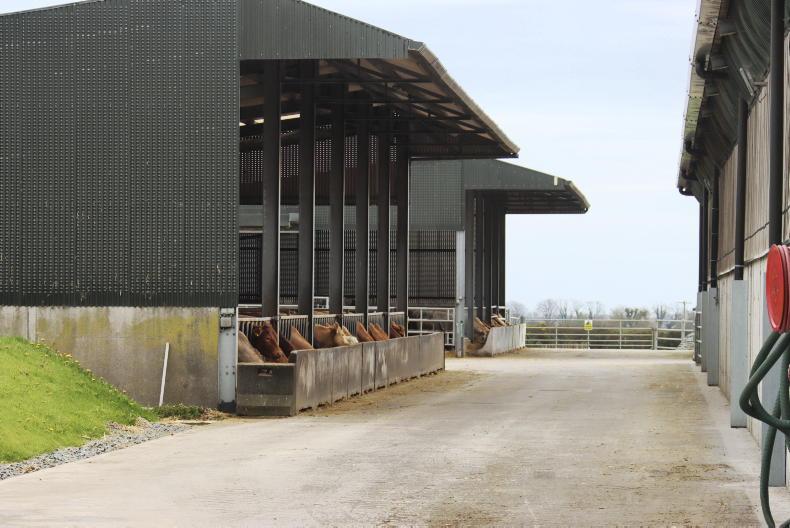
When the cattle arrive on farm they are held in a drop-off shed for two days where they are vaccinated, dosed and clipped. They then move to an isolation shed for 10 to 12 days before moving to the main finishing shed.
The heifers are mainly Charolais and Limousin-crosses with some Simmental and Belgian Blue-crosses also in the mix.
The whole team appreciates the massive effort that suckler farmers invest into breeding these top-quality cattle which is part of the reason why they hold health, quality, traceability and cleanliness standards to the fore.

The main housing facilities comprise a 14-bay double slatted shed, with a large straw bedded lieback area at the back of the slats.
The heifers for the system are purchased all year round with those purchased in the summer weighing in the region of 470kg to 600kg and those purchased in the winter months weighing between 540kg and 600kg.

The beef enterprise incorporates 300 acres of grazing ground which is paddock grazed on a three-day rotation system.
When the cattle first arrive on farm, they are put in the drop-off shed where they are vaccinated against IBR, Covexin 10, dosed and have their backs and tails clipped.
The heifers are then put into an isolation shed for 10 to 12 days before being divided for grass or the main finishing shed.

The main shed has top-class handling facilities making it very safe and stress-free for both the workers and the cattle.

The main finishing shed has long, clear passageways where the gates from each pen can be opened back to extend the pen size.
The heifers weighing in the range of 470kg to 540kg go straight out to grass, while the heavier heifers in the 540kg to 600kg weight range stay indoors and start on the intensive diet.
The heifers are fed a homemade mix, which comprises 17kg/head chopped potatoes, 10kg/head high-quality silage with 70% upwards DMD, 7.25kg/head maize meal blend, 0.5kg/head wheaten straw and 125g of minerals.
The heifers start on a 30:70 diet where they get 30% of the main mix and 70% silage. They are given a two-week warm-up period and then their mix to silage ratio is diluted by 10% every two days to allow their rumens to adjust to their new feeding regime.

Country Crest has its own 80 metre wind turbine which supplies 50% of its energy needs highlighting its focus on sustainability.
The cattle are generally on farm for 70 to 90 days in keeping with Bord Bia Quality Assurance standards before they are sent to the factory.
While in the shed, the heifers average a 1.3/kg daily liveweight gain, while the heifers on grass eating no concentrates averaged a 0.9kg liveweight gain in 2022.
Livestock farm manager Niall Maguire explained that drought can be a serious issue on the farm.
However, when conditions are favourable, the cattle which are batched in groups of 30, are moved on to a fresh paddock every three days.
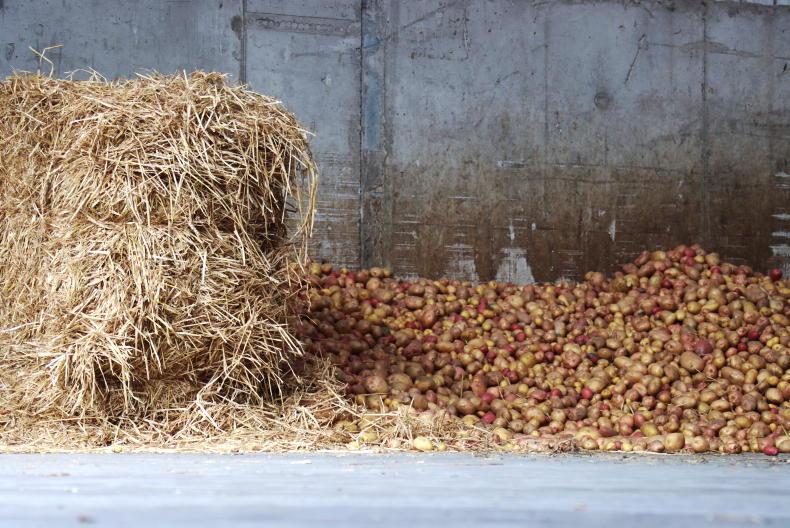
Straw which is used for bedding the cattle on a daily basis and potatoes which are chopped for the home-made meal mix are all grown on farm.
Last year, the heifers averaged a 58% killout with 80% of them grading as Us with some also grading as Es and Rs. However, the team aim to finish as many into U grades as possible and aim to finish 35 cattle per week.
Gabriel Hoey has a strong passion for livestock and a big interest in pedigree breeding.
He, alongside his dedicated team, runs a 20-cow pedigree herd on a separate farm.
The herd consists of 10 pedigree Hereford cows and 10 pedigree Angus cows that run with two stock bulls – an Angus which was purchased from Leo McEnroe’s Lisduff Herd, Co Cavan and a Hereford bull from the Coralstown Herd of Enda and Colin Burke, Mullingar, Co Westmeath.
The herd began competing at summer shows last year and scooped prizes as prestigious as the Connacht and Leinster heifer champion at Trim Show in 2022 with Rathmooney Destiny X095. The Hoeys are looking forward to the 2023 summer show season.
Twenty years ago, brothers Gabriel and Michael Hoey established the Country Crest brand on their farm in Lusk, Co Dublin. The franchise originally set out providing potatoes and onions to the retail sector, which later led to their prepared foods business.
In 2014, the brothers established their own on-site beef feeding unit which allowed them to produce a beef product that was not only sustainable, but met strict traceability and quality standards.

The heifers are purchased from farmers producing similar type heifers and from marts predominantly in the west of Ireland due to the excellent breeding and quality available.

The heifers are given a two-week warm up period before they start the special mic and silage feeding regime which begins at 30% special mix, 70% silage. This ratio is diluted by 10% every two days.
The Country Crest team has a strong appreciation for Irish produce and the goodness and quality that comes with that.
The livestock team is made up of livestock farm manager Niall Maguire, life-long employee Joe Archer and Paul Flynn who recently joined the crew.
Beef production
There is approximately 300 acres of grazing ground and the main housing facilities comprise a 14-bay double-slatted shed, with a large straw-bedded lie-back area at the back of the slats to provide maximum comfort for the cattle.

The special mix consists of 17kg/head chopped potatoes, 10kg/head high-quality silage with 70% upwards DMD, 7.25kg/head maize meal blend, 0.5kg/head wheaten straw and 125g of the ‘Heifer Power’ minerals from Devenish.
The beef unit is run alongside a 3,500ac tillage enterprise with all contracting work done in house.
A selection of the heifers are bought in from marts predominantly in the west of Ireland and from farmers who have reared weanlings of similar type to those within the system.

All of the farm's contracting work is done in house including making and cutting their own silage and straw.

When the cattle arrive on farm they are held in a drop-off shed for two days where they are vaccinated, dosed and clipped. They then move to an isolation shed for 10 to 12 days before moving to the main finishing shed.
The heifers are mainly Charolais and Limousin-crosses with some Simmental and Belgian Blue-crosses also in the mix.
The whole team appreciates the massive effort that suckler farmers invest into breeding these top-quality cattle which is part of the reason why they hold health, quality, traceability and cleanliness standards to the fore.

The main housing facilities comprise a 14-bay double slatted shed, with a large straw bedded lieback area at the back of the slats.
The heifers for the system are purchased all year round with those purchased in the summer weighing in the region of 470kg to 600kg and those purchased in the winter months weighing between 540kg and 600kg.

The beef enterprise incorporates 300 acres of grazing ground which is paddock grazed on a three-day rotation system.
When the cattle first arrive on farm, they are put in the drop-off shed where they are vaccinated against IBR, Covexin 10, dosed and have their backs and tails clipped.
The heifers are then put into an isolation shed for 10 to 12 days before being divided for grass or the main finishing shed.

The main shed has top-class handling facilities making it very safe and stress-free for both the workers and the cattle.

The main finishing shed has long, clear passageways where the gates from each pen can be opened back to extend the pen size.
The heifers weighing in the range of 470kg to 540kg go straight out to grass, while the heavier heifers in the 540kg to 600kg weight range stay indoors and start on the intensive diet.
The heifers are fed a homemade mix, which comprises 17kg/head chopped potatoes, 10kg/head high-quality silage with 70% upwards DMD, 7.25kg/head maize meal blend, 0.5kg/head wheaten straw and 125g of minerals.
The heifers start on a 30:70 diet where they get 30% of the main mix and 70% silage. They are given a two-week warm-up period and then their mix to silage ratio is diluted by 10% every two days to allow their rumens to adjust to their new feeding regime.

Country Crest has its own 80 metre wind turbine which supplies 50% of its energy needs highlighting its focus on sustainability.
The cattle are generally on farm for 70 to 90 days in keeping with Bord Bia Quality Assurance standards before they are sent to the factory.
While in the shed, the heifers average a 1.3/kg daily liveweight gain, while the heifers on grass eating no concentrates averaged a 0.9kg liveweight gain in 2022.
Livestock farm manager Niall Maguire explained that drought can be a serious issue on the farm.
However, when conditions are favourable, the cattle which are batched in groups of 30, are moved on to a fresh paddock every three days.

Straw which is used for bedding the cattle on a daily basis and potatoes which are chopped for the home-made meal mix are all grown on farm.
Last year, the heifers averaged a 58% killout with 80% of them grading as Us with some also grading as Es and Rs. However, the team aim to finish as many into U grades as possible and aim to finish 35 cattle per week.
Gabriel Hoey has a strong passion for livestock and a big interest in pedigree breeding.
He, alongside his dedicated team, runs a 20-cow pedigree herd on a separate farm.
The herd consists of 10 pedigree Hereford cows and 10 pedigree Angus cows that run with two stock bulls – an Angus which was purchased from Leo McEnroe’s Lisduff Herd, Co Cavan and a Hereford bull from the Coralstown Herd of Enda and Colin Burke, Mullingar, Co Westmeath.
The herd began competing at summer shows last year and scooped prizes as prestigious as the Connacht and Leinster heifer champion at Trim Show in 2022 with Rathmooney Destiny X095. The Hoeys are looking forward to the 2023 summer show season.
















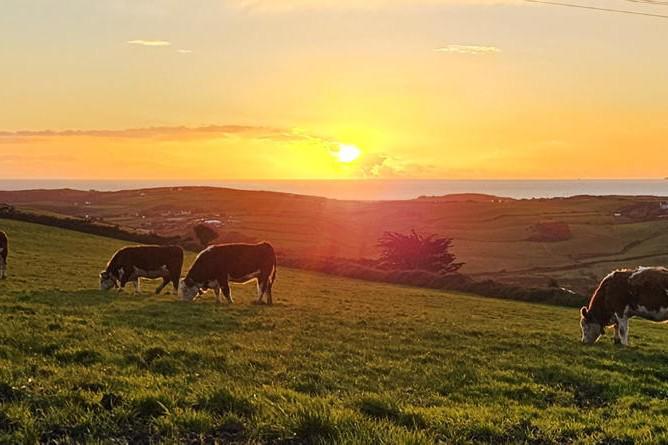

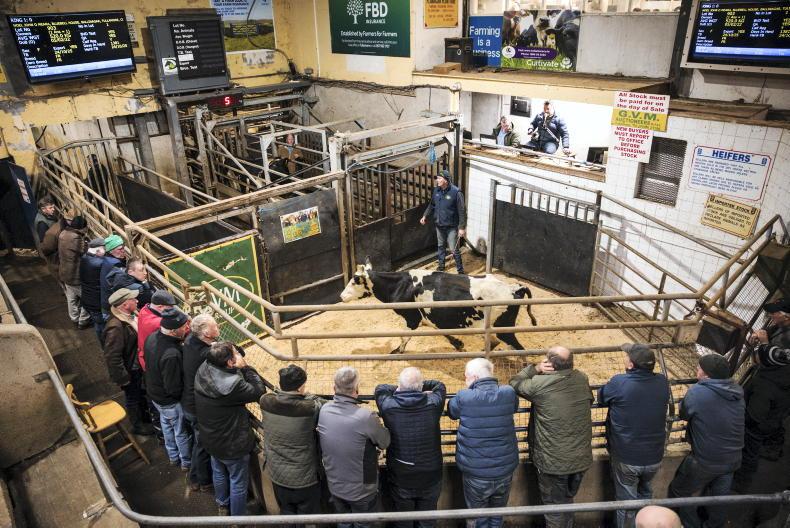
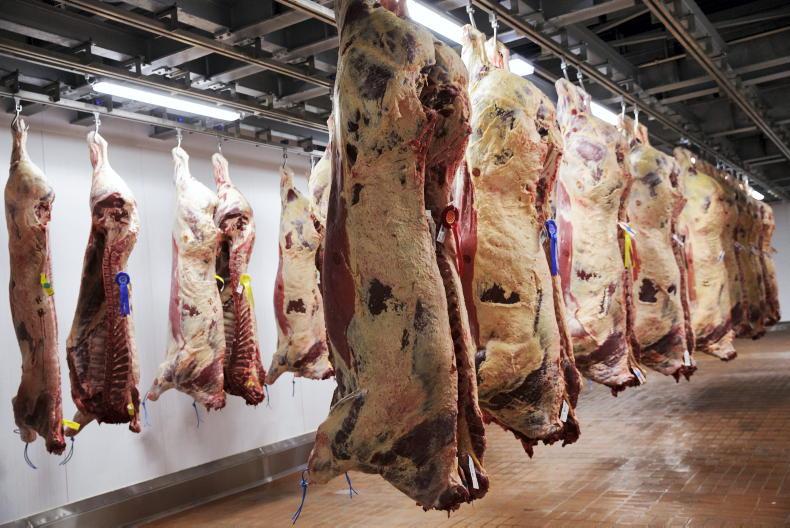
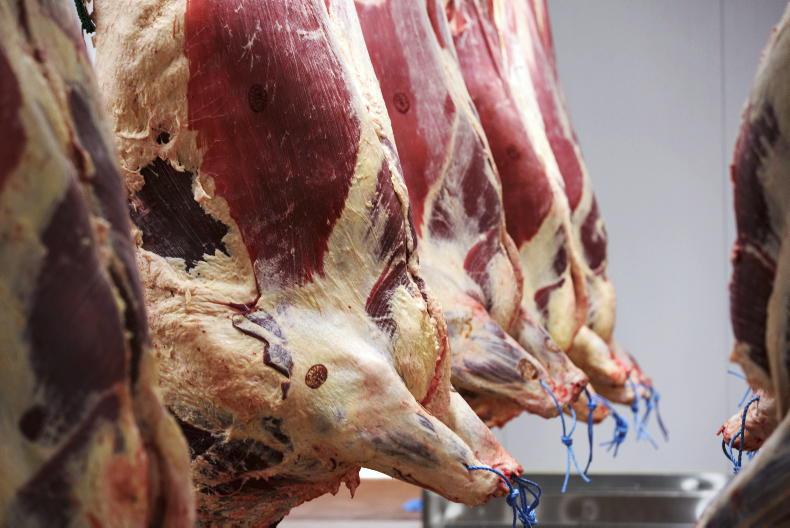
SHARING OPTIONS